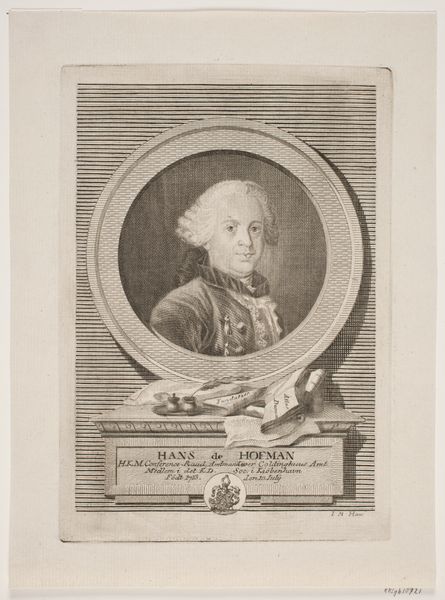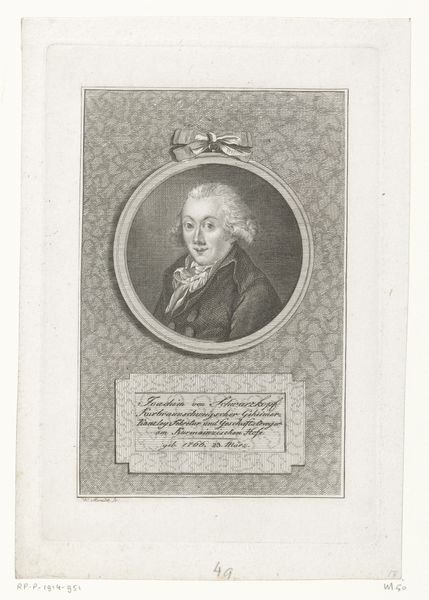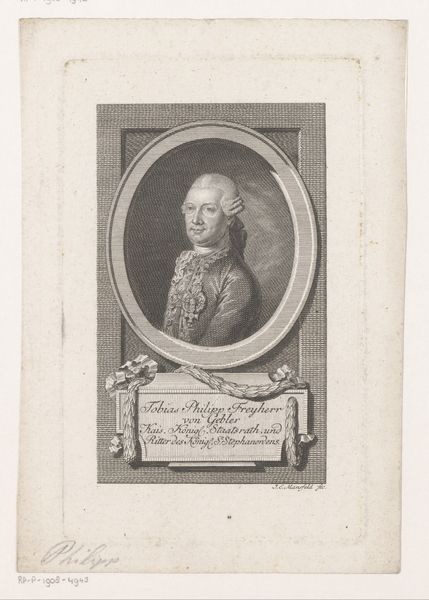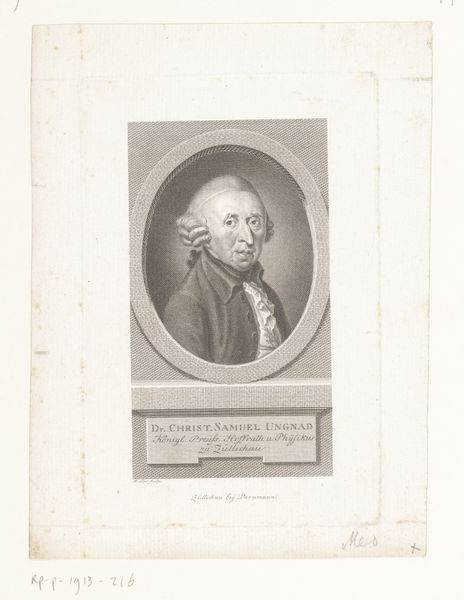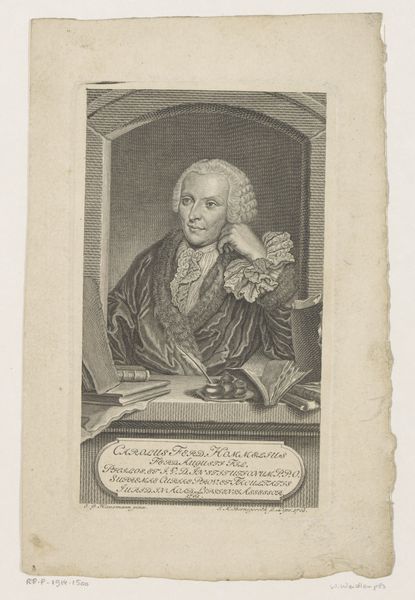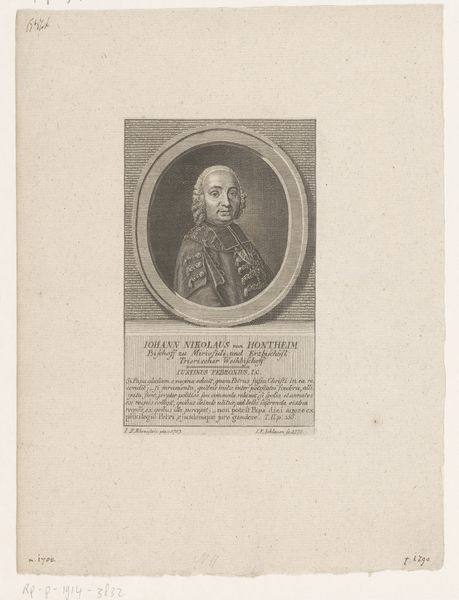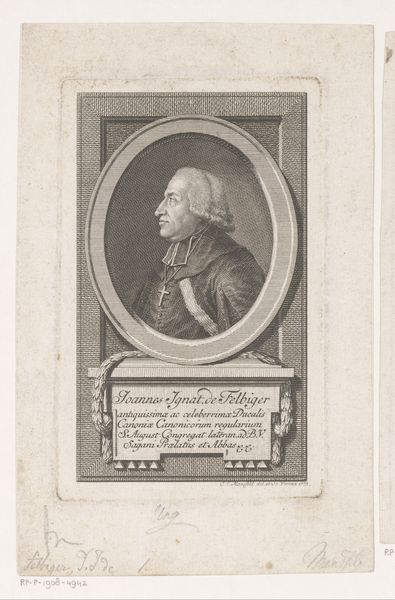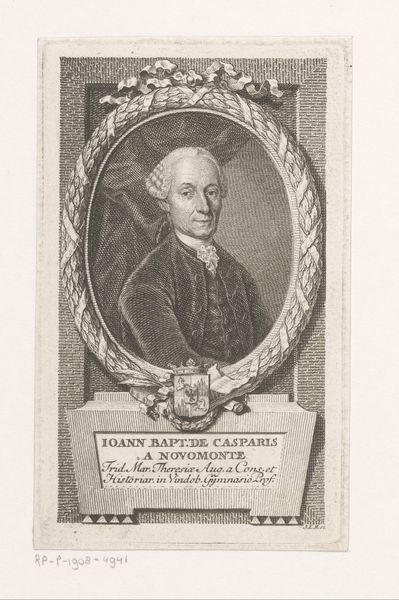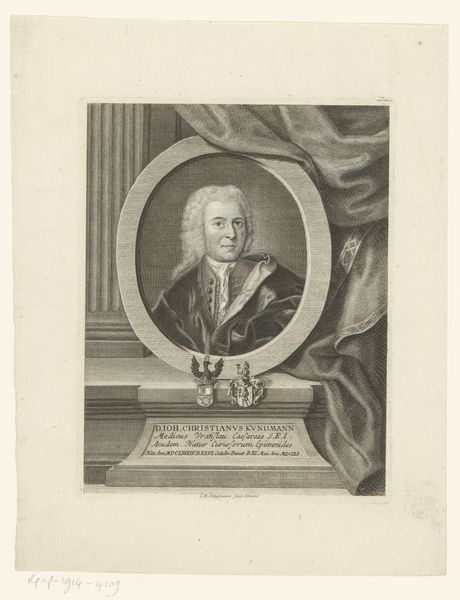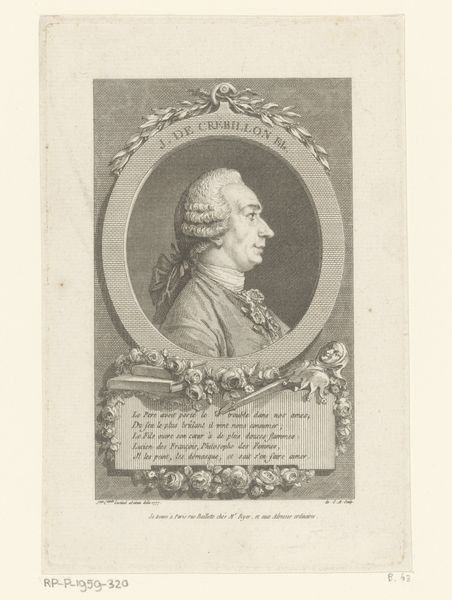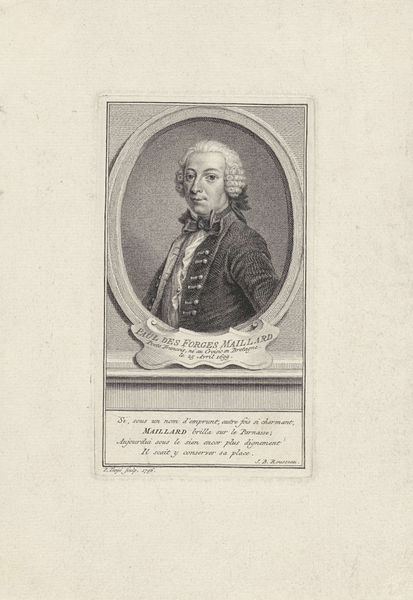
print, engraving
#
portrait
#
neoclacissism
# print
#
history-painting
#
engraving
Dimensions: height 212 mm, width 172 mm
Copyright: Rijks Museum: Open Domain
Curator: This print, titled "Portret van Jean Baptiste van den Sande," was created in 1787 by J.F. De La Rue. It is an engraving, showcasing a figure framed within Neoclassical motifs. The portrait itself seems rather formal. Editor: It strikes me as more than formal; there’s an intense gaze, almost confrontational, especially for a portrait made with such delicate lines. The subject feels very present. Curator: Indeed. The portrait captures Jean Baptiste van den Sande, a Brussels native known for his work in chemistry and pharmacy, and as an esteemed member of the Société de Liège. The style adheres strongly to the Neoclassical aesthetics of the time, emphasizing reason, order, and clarity. You can really see that social positioning in his poised demeanor. Editor: I notice how the surrounding frame itself acts as a symbolic border—perhaps representing societal roles or the boundaries of professional life during that era. What’s your read on this? Curator: I think that reading really connects to the power dynamics in 18th-century scientific and academic societies. While science purported to be objective, access and authority were structured along distinct lines of class, gender, and national identity. To your point about boundaries, the print almost performs an act of social inscription through its symbolic forms. Editor: Also note the almost heraldic presence of the man's professional details alongside his name – these add a layer that almost monumentalizes scientific merit. They emphasize how essential societal respect and membership in respected circles were during the Enlightenment period. Curator: Precisely, there's a strong effort to solidify reputation within broader power structures. We see here the historical relationship between the rise of scientific authority and established societal institutions. Editor: I wonder if his intense look reveals an unspoken plea for historical recognition too—as if to ensure his contributions wouldn't be erased by the relentless currents of time. Curator: A poignant reflection! I agree. What begins as a seemingly straightforward depiction now encourages contemplation on themes of recognition, power, and societal legacy. Editor: And that intersectionality of power and historical inscription makes the symbolic nuances and cultural context layered within this seemingly plain portrait endlessly compelling.
Comments
No comments
Be the first to comment and join the conversation on the ultimate creative platform.
